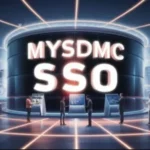Introduction
HMH Smart Square is a cloud-based workforce management and scheduling platform created by AMN Healthcare and Hackensack Meridian Health to optimize staffing in modern healthcare settings. Acting like a smart planner, it aligns clinician availability with patient demand while maintaining compliance. In today’s fast-paced healthcare environment, where overstaffing wastes resources and understaffing endangers lives, HMH Smart Square uses predictive tools to ensure balanced, efficient staffing. This guide explores the challenges it solves, its core features and benefits, real-life success stories, and useful tips. From integrations to comparisons and FAQs, get ready to uncover the full potential of HMH Smart Square.
Understanding Workforce Challenges in Healthcare
Common Staffing Pain Points
- Unpredictable patient volumes—peaks and troughs
- Complex coverage rules—skill sets, labor laws, certifications
- Manual scheduling—human error, burnout risk
Impact on Patient Care, Costs, and Staff Well‑being
Poor staffing boosts overtime costs, staff turnover, and errors. It’s a downward spiral: stress → dissatisfaction → compromised care.
Enter Predictive Scheduling and Smart Technology
Enter hmh smart square, with forecasts and analytics that anticipate staffing needs up to 120 days in advance—letting you plan smarter, not harder.
Overview of hmh smart square
Origins and Developer
Born from AMN Healthcare and Hackensack Meridian Health in 2015, hmh smart square was born of real healthcare needs—and continues evolving to solve them.
Core Objectives of the Platform
- Reduce Full-Time Equivalent (FTE) leakage
- Optimize staffing and O/T
- Empower staff with self‑service tools
- Ensure compliance & decrease labor risks
Who Uses It: Roles and Responsibilities
- Hospital admins & HR managers
- Nursing and department schedulers
- Clinical staff using Smart Square Go
- IT & Finance teams for integrations
Key Modules & Functionalities
Predictive Scheduling & Analytics
Uses historical data to forecast staffing needs 120 days out. Helps you dodge peaks and optimize headcounts.
Real‑Time Staff Self‑Scheduling
Staff access schedules, swap shifts, and pick up open shifts—reducing HR workload.
Shift Swapping and Open‑Shift Mechanism
A dynamic “open-shift” board lets team members drop/swap shifts instantly. Great for covering gaps fast.
Time‑Off Requests & Approvals
Track PTO in the same system—clean, transparent, and integrated into staffing plans.
Compliance Tracking (Hours, Certifications, Labor Laws)
Smart Square flags issues like missing certifications or overtime breaches—keeping you audit-ready.
Integration with EHR, Payroll, HR Systems
Seamless across platforms—EHR, payroll, HRMS—all synced to reduce double-entry and errors.
Mobile Access via Smart Square Go App
Staff can manage schedules on the go—view shifts, request swaps, get notifications. Though login bugs pop up per Google reviews.
Benefits of Implementing hmh smart square
Optimize Resource Allocation & Cut Overtime
Predictive tools and dashboards help slash unnecessary hours—some clients report huge cost savings.
Operational Efficiency and Cost Reduction
Hackensack Meridian slashed FTE leakage from 15% to 8.5%, saving $616K in 2023 alone.
Improved Staff Satisfaction and Retention
Autonomy empowers staff—pick their shifts, manage PTO, and balance life. That leads to happier, more loyal teams.
Better Patient Care Through Adequate Staffing
Less burnout, fewer errors, and proactive coverage translate to improved patient experiences.
Enhanced Regulatory Compliance and Reduced Risk
Built-in tracking eases audit pressures and ensures legal adherence from schedule to shift.
User Feedback & Insights
Staff Communication & Shift Freedom
SoftwareAdvice users love open-shift and real-time updates:
“The open shift program… allows the employee freedom of scheduling… works great in real time.”
Mobile App Experience—Pros and Cons
Play Store reviews:
Pros: flexibility, calendar sync
Cons: login bugs, missing fingerprint access
Testimonials from Healthcare Teams
Clinicians say hmh smart square “simplifies scheduling chores,” reducing manual effort and mistakes.
Integration & Onboarding Strategy
Technical Setup and IT Requirements
Phased rollout recommended. Start with a pilot unit, integrate EHR/HR/payroll, configure schedules and compliance rules.
EHR and HR System Configuration
Align staff data & availability. Map certifications and labor rules into policies.
Staff Training & Change Management
Hands-on sessions & ongoing support help ease resistance and foster confidence.
Best Practices for Smooth Adoption
- Pilot first
- Champion super-users
- Collect early feedback
- Iterate! Continuous improvement is key.
Real‑World Case Study: Hackensack Meridian Health
Initial Rollout Timeline and Scope
Launched in 2015; expanded during COVID to multiple hospitals; full rollout by pandemic’s end.
Results: Reduction in FTE Leakage & Cost Savings
FTE leakage fell from 15% in 2022 to 8.5% in 2023—saving $616,000.
Lessons Learned and Scaling Strategy
Phased implementation, executive buy-in, and continual support were key to success.
Tackling Common Challenges
Addressing Resistance to Change
Get staff involved early. Highlight success stories and empower them with mobile tools.
Technical Integration Hurdles
Plan for IT resources and allow buffer time for testing EHR/payroll sync. Leverage vendor support.
Managing Mobile App Limitations (e.g. login bugs)
IT coordination with vendor, frequent updates, and a fallback web option help smooth UX hitches.
Ensuring Ongoing Feature Support
Regular platform check-ins and refreshers keep your system aligned with evolving needs.
Measuring ROI & Success Metrics
Key KPIs to Track
- FTE leakage and overtime
- Shift coverage rate
- Staff satisfaction
- Open-shift fill rate
Cost vs Benefit Analysis Template
Calculate license & staff time vs savings from reduced overtime and turnover.
Reporting Tools & Dashboards
Smart dashboards help visualize staffing vs demand, compliance gaps, and cost tracking.
Future Roadmap & Innovations
Enhancing Predictive Analytics
Incorporate AI to forecast not just staffing needs, but patient acuity and throughput.
AI‑driven Demand Forecasting
Next-level forecasting using weather, flu patterns, and event data.
User Interface Upgrades & Mobile Enhancements
Expect QR login, biometric access, calendar integrations, and improved speed.
Expansion to Non‑Clinical Departments
Applying smart scheduling to clinics, admin teams, labs, and more.
Comparison with Other Scheduling Tools
Feature Matrix
hmh smart square stands out with predictive analytics, open-shift boards, compliance tracking, and integrations.
Strengths & Weaknesses of hmh smart square
Strengths: predictive power, mobile access, cost savings
Weaknesses: occasional UI bugs, IT setup time
Ideal Fit Profile—when it excels
Large healthcare systems with complex schedules, compliance needs, and a mobile‑savvy workforce.
Tips & Best Practices
- Empower Staff With Self‑Scheduling
Let them take ownership—boosts morale and retention. - Keep Predictive Models Updated
Refresh inputs to stay accurate—seasonal changes, census trends matter. - Conduct Regular Training Refreshers
Avoid feature fatigue; run short monthly refresh sessions. - Use Mobile App Strategically
Encourage notifications and calendar sync to increase app adoption.
Final Thoughts
hmh smart square is more than a time‑clock; it’s a strategic platform that helps healthcare systems forecast, schedule, and staff smarter. With proven cost savings, staff empowerment, and better patient care, it’s a game‑changer. Whether you’re a scheduler, clinician, or executive, embracing this tech is your ace in staffing continuity and efficiency.
Additional Resources
- Official Guides & Help Docs via AMN Healthcare
- Industry Insights & Benchmarks on SoftwareAdvice and Capterra
- Contact Info: AMN Healthcare or Hackensack Meridian’s workforce tech teams
FAQs
Q. What size of organization is it best suited for?
From mid‑sized hospitals to large health systems—anyone with layered shifts and strict compliance.
Q. How secure is the platform?
It uses encryption, SSO/AD, role-based access, and is HIPAA compliant.
Q. Can staff access remotely?
Yes! Web and mobile app access empower staff anywhere.
Q. What does implementation timeline look like?
Pilots (4–8 weeks), with full deployment in 3–6 months depending on scale.
Q. Is training included?
Yes—vendor support, webinars, and onsite/virtual training are typical.



No Comment! Be the first one.